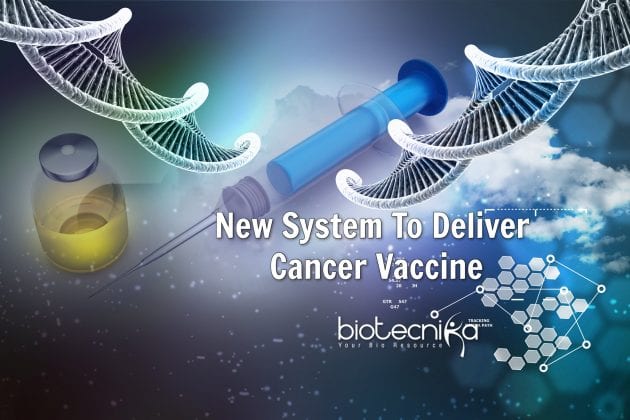Since the only cancer vaccine available on the market showed limited efficacy in clinical trials, the EPFL researchers are working towards an alternative now. EPFL researchers have developed a platform to deliver the cancer vaccine precisely, stimulating the immune system in a safe way.
Therapeutic cancer vaccines remained ineffective to date since it was first developed 100 years ago. There are two major obstacles in the development of an effective cancer vaccine. The first obstacle is the development of precise vaccines which are hard to achieve as the tumor mutations are unique yo each patient. The second obstacle is the need for a safe system to deliver the vaccine to the right location and achieve a specific and strong immune response.
Li Tang’s team at EPFL’s School of Engineering has developed a new platform to effectively deliver the cancer vaccines. They used polycondensation, a polymerization technique to create a prototype vaccine that can automatically travel to the desired location and stimulate immune response there.
The technique has been already tested in mice and published in ACS Central Science. PepGene is a startup co-founded by Li Tang with partners working on an algorithm for accurately and quickly predicting mutated tumor antigens
Usually, vaccines are preventive as they are inactivated or weakened parts of the virus which prompt the immune system to produce antibodies, preparing the human body to defend itself against future infections.
But the purpose of a therapeutic cancer vaccine is to help the body defend itself against a disease that is already present. There are many immunotherapies present but only a few patients respond to them. To get the best possible immune response, the vaccines can be combined with those immunotherapies. The risk of relapse also should be reduced by vaccines.
The first stage of delivering the cancer vaccine involves the introduction of precise vaccine subcutaneously to the patient. The vaccine’s molecules will then travel to the lymph nodes where they will encounter with immune cells. If the vaccine successfully stimulates the dendritic cells, they will present specific antigens to cancer-fighting T-cells to train and activate T-cells to attack cancer cells.
Though the procedure appears simple, it is extremely hard in reality. Since the vaccine molecules are extremely small, they tend to be absorbed or dispersed in the bloodstream even before reaching the lymph nodes.
Li Tang overcame this obstacle by chemically binding the vaccine’s parts together to form a large entity. The neoantigens specific to the tumor to be attacked and an adjuvant forms the composition of the new vaccine named Polycondensate Neoepitope (PNE). The components naturally bind together when combined with a solvent, forming a large entity that is difficult to be absorbed by blood vessels, thus travels to the lymph nodes.
The components separate again inside the dendritic cells. This helps the dendritic cells to present antigens to T-cells precisely leading to a strong immune response.
The research team is still working to improve the detection stage of tumor-specific antigens. The identification stage is crucial and accurate identification will allow scientists to precisely target tumor cells as these neoantigens are not present in healthy cells.

